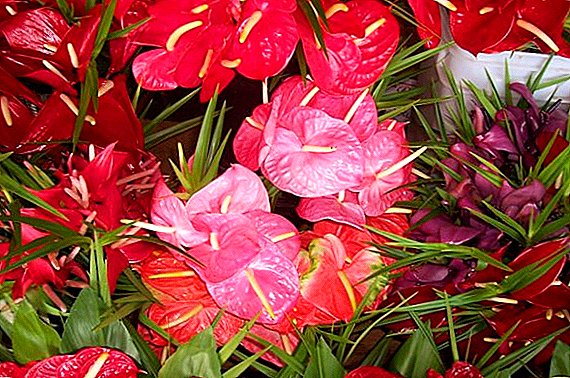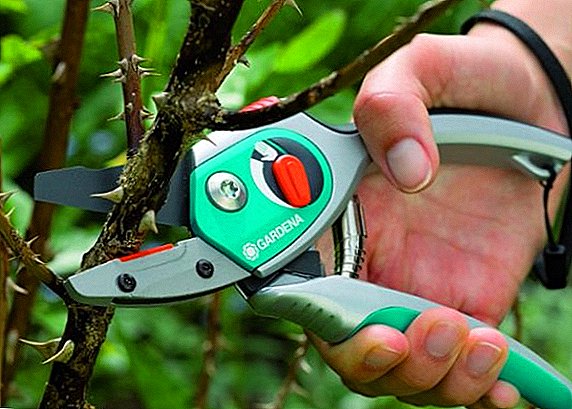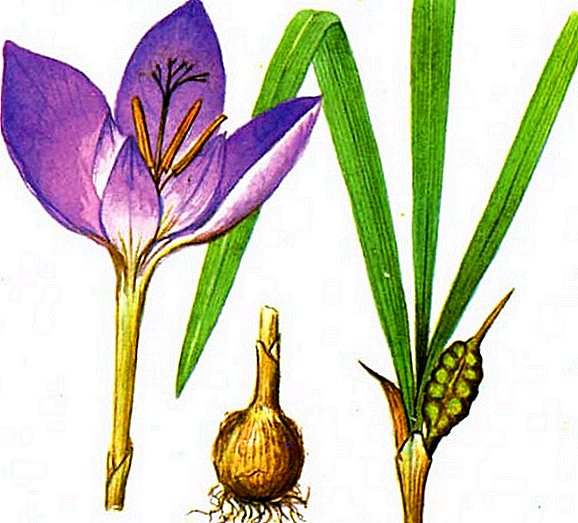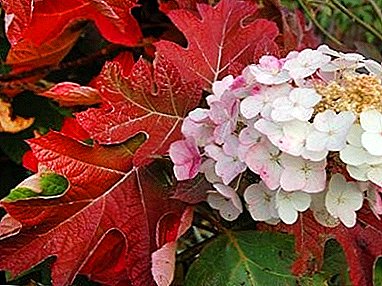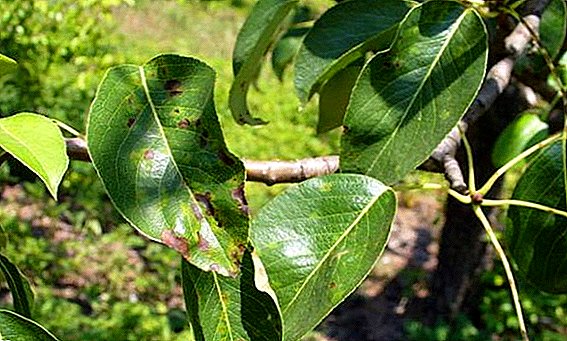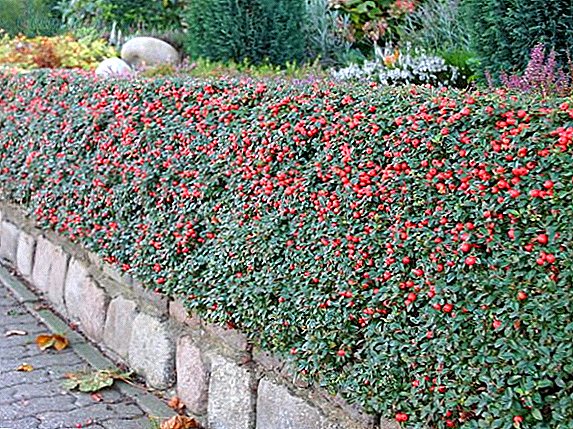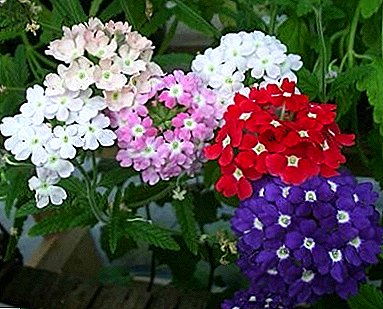
Verbena is a plant with a long history. She is loved and revered since ancient times as a flower belonging to the goddess of love and beauty. Hybrid vervain is considered the brightest and most attractive variety of this amazing plant.
Characteristics of hybrid verbena
The size of the bushes can vary from 10 cm in dwarf varieties to 60-70 in tall. Stems often erect, but there are also creeping. The shoots are tetrahedral, covered with short hairs.
The root system is quite extensive, grows 15-25 cm deep. The leaves are grouped at the bottom, at the base of the stem, their shape can be oblong, rounded at the end, triangular and heart-shaped. The coloring of the ground part has a deep emerald hue.
Inflorescences - umbrellas consist of many small flowers of the most diverse colors. It includes colors such as blue, purple, red, white, pink, blue and peach. After flowering, the fruit is formed in the form of a nut or box.
Photo hybrid variety
Next you will see a photo of a grassy plant for the open ground of verbena hybrid:




Landing

Produced in late spring, when the weather is warm. At this time, seedlings of vervain are planted on a permanent site. The place should be well lit throughout the day to make the light-loving beauty feel comfortable. You can not plant a hybrid view of the lowland, where the moisture flows after the rain or on the marshy areas. The plant belongs to the drought-resistant species, poorly tolerate constant dampness.
Land preparation
The flower does not impose special requirements on the composition and reaction of the soil, but it feels better on fertile loamy soil with a loose structure.
Soil must be mixed with humus and mineral fertilizers containing potassium and phosphorus. In this nutrient mixture planted bushes and lightly tamp the soil around.
Care
It does not present any particular difficulties, since the hybrid verbena is a completely non-capricious plant.
Watering
Moderation and regularity - the main principles of the event. Watering is done at the root during dry periods with an interval of at least 5 days. From mid-July, the procedure can still be reduced.
Air humidity
Tropical guest perfectly tolerates dry air for a long period, so artificially increase the humidity is not required. Spraying during flowering is not worth it, so as not to get ugly brown specks on delicate petals.
Top dressing

Organics need to make a one-time, during landing. If verbena gets a lot of nitrogenous compounds, it will increase the green mass of leaves and stems. Having spent on it all the power, will no longer be able to bloom.
To stimulate the active abundant flowering is required periodically to feed the plant with complexes of trace elements.
Thermal mode
Gibribny vervain perfectly tolerates any heat, but does not like the cold.
Even dropping to 0 ° will be disastrous for her.
In hot weather, it is recommended to loosen the soil after watering, to ensure normal ventilation of the roots and to avoid strong drying, and as a result, compaction.
Bloom
It starts from July and lasts until the first frost. In order to increase the decorative effect and prolong the formation of new inflorescences, it is recommended to cut off dried buds.
Transfer
If necessary, you can move even flowering bushes - verbena calmly endures this procedure without falling into stressful states. The best way is to transship with a lump of soil.
Lifespan
Most varieties of hybrid verbena are long-lived in warm climates. In the conditions of frosty winters the tropical guest does not survive, and therefore is used as a flowering annual. You can extend the life if you bring the bushes home and grow in pots.
Reproduction of a grassy plant for an open ground
Verbena is grown from seed and stem cuttings. But you don’t need to harvest the seeds yourself, as they will not transfer the varietal qualities to the new plants - this is the property of all hybrid specimens. Therefore, seeds are used only purchased. They are stored for a long time, maintaining good germination of 2-3 g.
Growing from seed

To get a flowering plant in summer, seeds are sown on seedlings no later than February. To do this, use small containers filled with loose substrate. You can buy ready-made universal soil or mix sand with peat and garden soil.
Seeds evenly placed on the surface and do not fall asleep on top of the ground. Instead, the boxes are covered with glass or plastic wrap. Sprouts appear after 13-15 days.
When the first pair of true leaves appears, the seedlings can be swooped down in separate cups or flat dishes.
Growing from cuttings
Easy and affordable way to obtain planting material on their own. Harvest cuttings in the fall, during harvesting of faded plants. They need to dig with a lump of soil and place in a suitable container. Bushes are sent to wintering enough cool room with a temperature not higher than 7-9 °. It can be a glazed balcony, cellar or basement.
For the subsequent landing on the street bushes get in March. They cut off healthy apical shoots, containing 5-6 axillary buds. Slices are disinfected with activated carbon powder or wood ash.
Finished cuttings are placed in a substrate of sand, peat and vermiculite, deepening to the lower leaf bud. To accelerate rooting, containers are placed in a greenhouse or covered with plastic bottles. The roots begin to appear in the second or third week.
Diseases
Hybrid verbena, like other varieties, is less prone to disease. But it can also attack fungi and insects.
Mealy dew
The fungus sets in high humidity against the backdrop of warm weather. Leaves appear white blotches, similar to spilled flour. Severe infection causes a change in their color to purple. Then the leaves fall off, the plant dies. The disease is treated with fungicides, containing copper (Oxyg, Abiga-Pik, copper sulfate) and new combination drugs of systemic action (Vitaros, Ridomil Gold, Previkur).
Rot
Verbena bushes can attack almost any fungal rot. Among them - stem, black leg, root, gray. Cutting off all the affected parts in time and treating healthy tissues with fungicidal agents, you can save your little flowers from the disease.
Pests
Hybrid beauty often damages aphid - the scourge of all cultivated plants. It multiplies rapidly and populates all the surrounding bushes, slowing down or completely stopping their development. Insecticides such as Cypermethrin, Imidacloprid, Intavir, Hostavik and Biotlin are used to combat it.
Conclusion
Verbena hybrid - A great option for decorating the front garden as grass for open ground. With minimal costs you can get long-blooming bright bushes.


